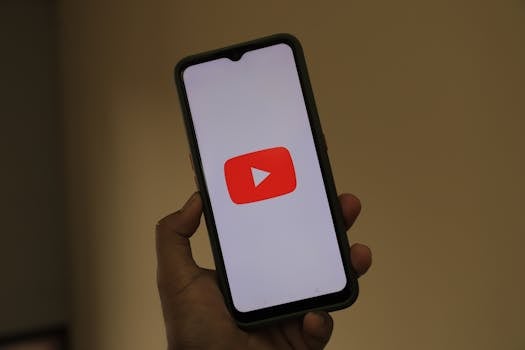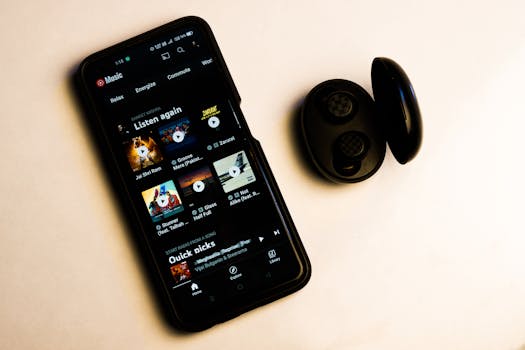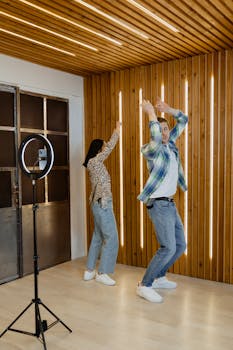Wellness
How to Balance Screen Time with Digital Wellness Tools
Learn how to balance screen time with digital wellness tools for healthier routines. Explore checklists, habits, physical cues, and real-world tactics to improve your digital life every day.
Advertisement
Most people reach for their smartphones countless times each day, sometimes barely noticing. Finding a balance with digital wellness tools can make screen habits more intentional and less overwhelming.
Studies show routine device overuse impacts focus, mood, and even sleep. It matters for families, professionals, and students alike. When unchecked, extra screen time piles up quickly and quietly.
By reading on, you’ll discover practical tactics that genuinely work. Explore tailored strategies, actionable steps, and clear guidance for using digital wellness tools to create healthy daily rhythms—without resorting to extreme limits or unplugging entirely.
Setting Intentional Boundaries From Day One
Using a healthy routine and clear screen time rules creates immediate positive change. Start by naming one main goal you want from digital wellness tools, such as focusing more on family every evening.
Next, experiment with time limits. Say, “No screens during dinner, and only thirty minutes on socials after work.” Gradually, the tools support—not dictate—your choices and mood in real time.
Training Yourself to Recognize Digital Cues
Unconscious scrolling usually sneaks in when you’re tired or bored. Digital wellness tools allow you to spot patterns by tracking when you reach for your phone and what emotion prompts you.
Try labeling the urge—think, “I’m fidgeting, not needing information.” Breaking this habit by recording your triggers makes adjusting future routines more realistic and less judgmental.
When you catch a cue, sit with it for ten seconds before grabbing your device. This simple pause, paired with insights from digital wellness tools, disrupts autopilot and supports mindful decisions.
Defining Clear Daily Tech Rules
Write down two rules that feel doable, like “No screens at breakfast” and “Limit video calls to work only.” Setting these upfront anchors digital wellness tools to your daily goals, not just generic recommendations.
Hang a reminder on your fridge or whiteboard so the rules stay visible. Whenever you slip, use that as data instead of discouragement—tweak rules to fit your real-life challenges, then try again the next day.
Consistency beats intensity with boundaries. Start small, check digital wellness tools for daily progress, and celebrate tiny wins that build momentum over time.
| Tool Type | Primary Feature | Best For | Action Item |
|---|---|---|---|
| App Timer | Set daily limits | Reducing scrolling | Schedule a 30-min window after dinner |
| Notification Blocker | Pause alerts | Minimizing distractions | Enable “focus mode” during work tasks |
| Progress Tracker | Monitors daily use | Raising awareness | Review usage after one week to spot patterns |
| Mood Logger | Records feelings | Connecting mood and screen time | Log moods after sessions, adjust routines |
| Break Reminder | Prompts to pause screens | Preventing burnout | Set hourly reminders to stand up and stretch |
Building Custom Checklists for Device Use
Creating personalized checklists transforms daily decisions. Instead of vague intentions, you’ll have clear steps linked to digital wellness tools. This makes every action simple and trackable, whether at home or work.
Start with two primary checklists: one for workdays, another for weekends. Use language in the checklist reflecting your unique needs, such as “Finish client emails before browsing news feeds” in a workday list.
Anchoring Device Habits to Real Life
It helps to treat your device like a handy kitchen gadget—only pull it out with a purpose. Digital wellness tools support this shift: every checklist item anchors a physical action, such as putting your phone in a desk drawer during lunchtime.
As you cross off each item, the routine sticks better. For example, “Check focus timer before starting meetings” or “Review bedtime screen use log before reading.” Reinforce each habit with a reward—maybe a cup of tea or a quick walk outside.
- Turn on do-not-disturb during chores to focus on one task at a time—this leads to fewer distractions and a greater sense of accomplishment for each completed step.
- Use a break-reminder app to nudge you to stand up hourly—breaking screen time into intervals promotes energy and can prevent stiffness in shoulders and neck.
- Log your daily digital habits in a wellness app—identifying patterns makes it easier to tweak routines and track improvements from week to week, helping goals feel attainable.
- Uninstall unused apps every Sunday evening—minimizing app clutter reduces unnecessary temptation and frees up mental space for more important activities.
- Charge devices outside the bedroom—removing screens from your sleeping area signals rest time, improving the odds of better-quality sleep and less morning scrolling.
As you implement your lists, rely on digital wellness tools for reminders. This approach blends structure without rigidity, so shifting your screen habits feels easier and more rewarding.
Celebrating Small Screen-Free Wins
Each time you stick to your homework or work checklist, take a moment to recognize it. For instance, saying to yourself, “I made it through lunch without checking notifications,” reinforces new habits.
Record these moments in a tracking app. Even a sticker chart on your fridge serves as a positive visual record, confirming digital wellness tools truly support growth and not just restriction.
The momentum from celebrating small wins is contagious; you’ll naturally want to keep going. Building on each success gradually leads to longer, healthier device-free periods in your routine.
- Start every morning by checking a mood-tracking app to set your intention—knowing your emotional baseline helps plan for stress triggers you might encounter during the day.
- Limit social app use to three check-ins daily—fewer scrolls mean more presence with offline priorities, making it easier to focus on what matters most.
- Use bedtime reminders to dim screens after 9pm—improved sleep and relaxation follow when digital wellness tools signal quieter evenings without blue light exposure.
- Plan a weekend “phone stack”—have everyone in the house place devices out of sight for an hour, encouraging face-to-face connection and shared activities.
- Delete one distracting game every Friday—less clutter reduces the urge for mindless play, giving your brain a break from rewards engineered to keep you hooked.
Reflect each Sunday on your progress by reviewing checklist results in a wellness tracker. Noting even one improvement motivates you to fine-tune your approach for the week ahead.
Navigating Social Pressures and Group Screen Habits
If you’ve found it tricky to balance group dynamics and screen time, you’re not alone. Digital wellness tools give you a concrete way to reinforce new boundaries despite peer behaviors or social expectations.
Collaborative Rule-Setting for Shared Spaces
Gather your family or housemates for a ten-minute huddle. Together, pick one shared screen-free activity nightly. Phrase rules as “We’ll play a board game after dinner on Mondays instead of watching videos.” Use digital wellness tools to set reminders.
Groups benefit from visual cues. Print out the new rule and post it where everyone can see—on the fridge, kitchen table, or common hallway. This small shift increases shared accountability without policing each individual.
Ask, “What would make it easier for us to stick with our plan?” Tweak boundaries as new challenges pop up. Logging joint screen use in a shared app makes success measurable and fun to track.
Managing Peer Influence in Social Settings
In a friend circle, decide together—”No phones out at lunch unless we’re sharing photos.” Use a timer app as a group, letting it signal designated phone check-in times. This tactic uses external cues to limit tech in a realistic way.
When someone slips, offer a friendly redirection instead of criticism—”Let’s finish this story before we check notifications.” Apps can be set to prompt group reflection each evening for reinforcement.
Over time, the entire group becomes more mindful. Digital wellness tools quietly reinforce these agreements, turning positive peer pressure into support for healthy balance, not competition over who is “better” at unplugging.
Linking Physical Wellness Habits to Digital Routines
Syncing movement breaks, sleep, and nutrition tracking with digital wellness tools transforms your workflow. Tying screen time to physical cues keeps wellness goals actionable and practical for daily life.
Pair every hour of work with a screen break. Use apps to remind you to step outside, stretch, or hydrate—your body and mind both benefit. This strategy builds whole-body wellness into digital routines.
Integrating Mindful Movement Reminders
Set a standing or walking reminder to ping every 45 minutes. Use positive wording in your app—for example, “Let’s stretch!” Make it fun: create a dance or yoga move you only do during these breaks.
Log your activity after each prompt. Over time, noticing small aches or energy dips, you’ll learn which intervals suit you. Adjust reminders as needed, letting digital wellness tools adapt rather than overwhelm.
By syncing movement breaks to device use, healthy habits get woven into your digital rhythm—making consistent, meaningful self-care almost automatic throughout the week.
Connecting Nutrition and Hydration Logs
Every meal or snack is an opportunity to track screen use and food choices side-by-side. Use your favorite app to log what you ate and snap a quick note about device use during meals.
After one week, see when mindless scrolling creeps in—maybe late-night snacks pair with extra screen time. Adjust your nightly routine with digital wellness tools to wind down earlier, so your kitchen and screen habits align.
By linking device checks to eating and hydration reminders, you nudge yourself toward better choices. Wellness apps keep progress visible and build real confidence in your balanced routine.
Rewiring Your Evening Routine for Better Sleep
Redesigning your evening schedule around digital wellness tools leads to more restful nights and refreshed mornings. Limiting screen exposure before bed can drastically improve sleep quality, even if you only trim 15 minutes nightly.
Begin with notifications: silence them an hour before sleep. Use calming sound apps for a wind-down ritual—pairing soothing audio with a light stretch signals your body that it’s time to rest, not scroll.
Creating Non-Digital Bedtime Rituals
Replace late-night doomscrolling with simple analog rituals. Read a printed book or journal by candlelight. Place chilled herbal tea on your nightstand. These swaps encourage mental separation from work emails or group texts.
If your urge to check screens is strong, set a five-minute timer on your digital wellness tool. After it expires, physically move your phone out of arms’ reach—a concrete action to break the habit loop.
Document how you feel in a mood-tracking app each morning. Over time, trace improvements in sleep, alertness, and resilience—proof that digital wellness tools help cultivate healthy rest cycles.
Setting Up Bedroom Tech Limits
Charge devices outside your room when possible. If needed for alarms, set “low light” and “no notifications” modes automatically every night. This change reduces the temptation for bedtime scrolling.
Communicate your new boundaries to family or partners: “After 10pm, I won’t reply until morning.” Reinforce this with gentle reminders or phone settings that maintain your new sleep-friendly routine.
Combining digital wellness tools with clear household agreements yields reliable, measurable improvements in both mood and nightly recharge.
Summary: Making Digital Wellness Second Nature
Balancing screen time with digital wellness tools begins with intentional routines, not rigid restrictions. Consistent checklists, group accountability, and physical self-care seamlessly tie devices to positive outcomes.
Across work, home, and social spaces, thoughtful tool use creates measurable, sustainable results. By syncing app features with real-life rules, boundaries naturally strengthen over time—and screen time loses its hold.
Let your wellness tools serve as gentle guides, not strict limitations. Celebrate every improvement, no matter how small, and adjust when life changes. With steady attention, digital balance becomes a daily habit you trust.
You may also like

Meditation Timers That Help You Stay Consistent
Stay consistent and mindful with meditation timers that structure sessions, track progress, and promote inner calm.
Keep Reading



